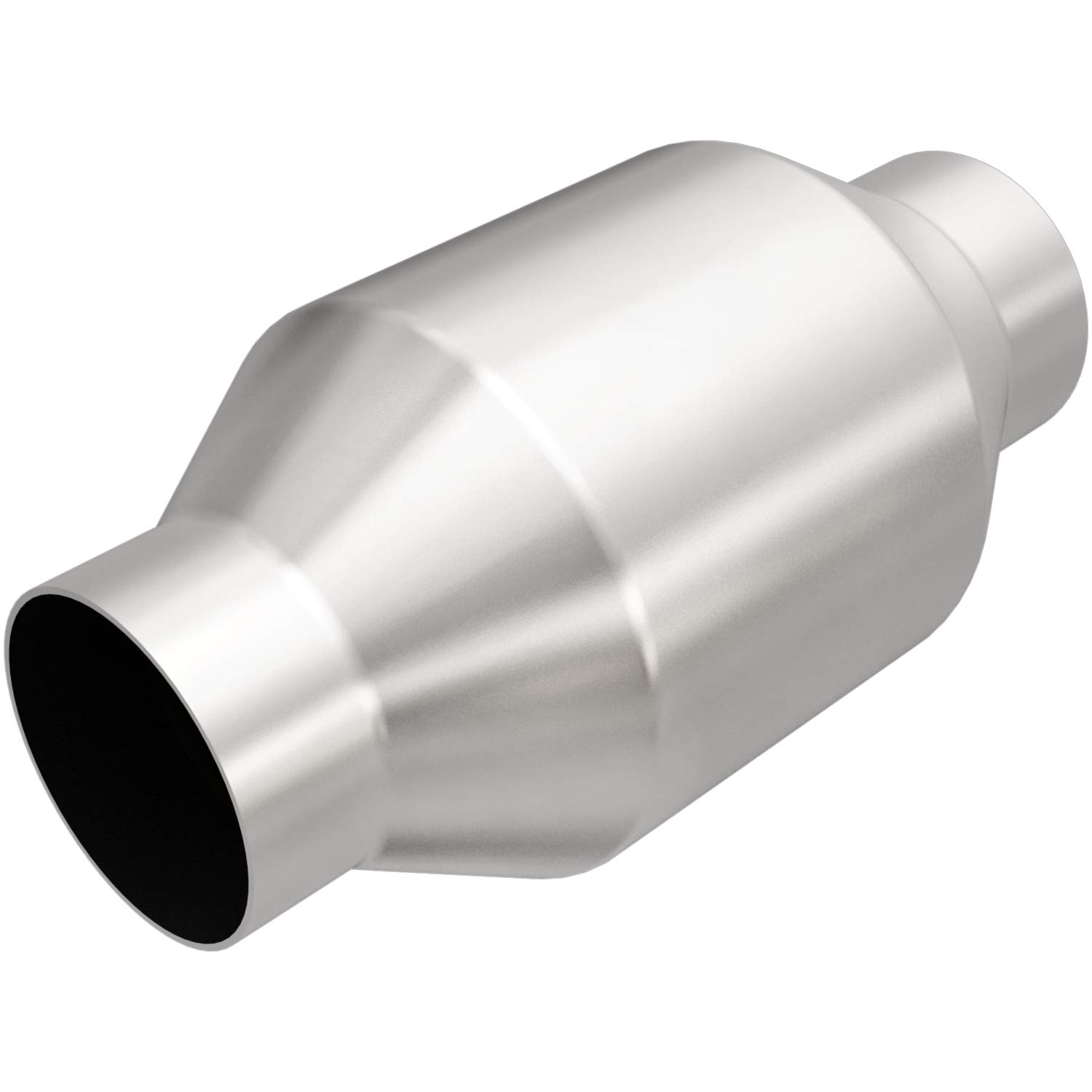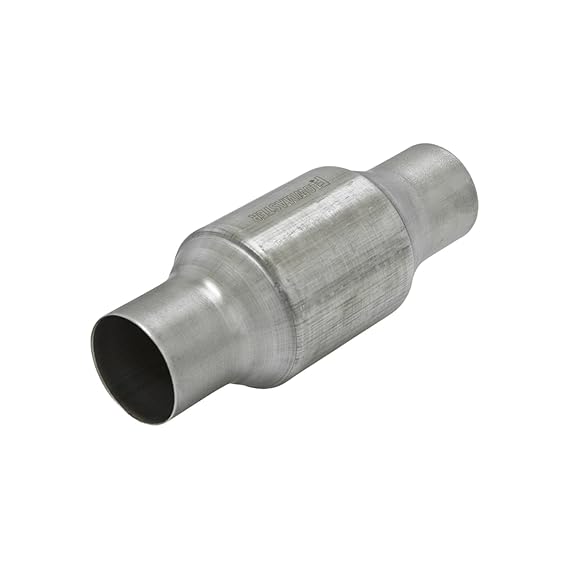
Table of Contents
If you are looking at ways to get some extra horsepower from your engine, de-restricting the exhaust system will probably be your first step. For start, it is not very expensive when you compare it to other engine power upgrades. And if you go for the cat-back system built specifically for your car make and model, it is quite simple to install, too. Best High Flow Catalytic Converters
In the end, wrap it all up with straight-through de-cat pipe instead of those restrictive catalytic converters. You will surely have noticeable improvements. The engine breathes easier, throttle response is quicker and car sounds much sportier. This seems like a hot ticket for cheap and easy power gains! Yet, there are one or two drawbacks.
-
First of all, it is illegal. Sure, back in the day, nobody really cared about this. But today we have strict regulations about emission control, and even tighter inspections. While some states still rely on visual control of the exhaust system, many of them have incorporated a mandatory smoke-test. And no matter how tuned up your car is, you will not pass it without a catalytic converter. In the worst case scenario, you might get a fine.
-
Treehuggers will hate you, because untreated exhaust gases have a bad effect on our environment. Hydrocarbons and Nitrogen Oxides are key components of smog.
-
Lastly, but most importantly, it is harmful for our health. While you might ignore the ozone layer or trees, don’t forget that exhaust gases are poisonous to you, your family, and your neighbors. Excessive amounts of hydrocarbons, carbon monoxide or nitrogen oxides can have serious health impacts.
As catalytic converters have been around for a while, they have evolved in every way over past decades. However, they still present a flow restriction, especially at higher engine speeds when there is a large number of exhaust gases. Luckily for all of you power-addicts, there is a solution in form of high flow catalytic converters. It will help you unlock that extra kick without breaking the law, ozone-layer or your neighbors’ lungs. So, what differs this high flow catalytic converters from factory-installed OEM ones?
Best High Flow Catalytic Converter in the Market
This universal spun catalytic converter from Magnaflow is a great choice for just about any car.
A high flow metallic core makes it suitable for heavy-duty applications. So, if you have a tuned up engine or do a lot of towing, this will be a right choice for you. It is built in U.S.A. and it has a fair price, too.
- high flow 200 Cell metallic substrate internals
- suitable for heavy duty applications
- stainless steel casing
- for OBD2 vehicles
- meets Federal EPA requirements
- not legal for CARB states
In most cases, performance and high-prices go hand in hand. But this is not the case with Flowmasters 223 series. This universal catalytic converter offers excellent flow characteristics while keeping your ‘check engine’ light of. If you want to free up the exhaust on a stock engine, this will be your best choice.
- high flow 400 Cell ceramic substrate internals
- great price
- stainless steel casing
- for OBD2 vehicles
- meets Federal EPA requirements
- not legal for CARB states
Vibrant GESI HO-series is a perfect match for application in cars with highly modified engines. It has a metallic core that can endure extreme exhaust temperatures while keeping the high gas flow. The higher price is easily justified for use in high-performance cars, as this is the only catalytic converter that can take up to 700 hp.
- high flow 300 Cell metallic substrate internals
- for extreme engine performance - up to 700 hp
- stainless steel casing
- for OBD2 vehicles
- meets Federal EPA requirements
- not legal for CARB states
Types of Catalytic Converters
For start, let’s see how the catalytic converter works. Cut open any of them, and you will find a monolith honeycomb-like mesh inside, called catalyst support or substrate.
It carries the catalyst - usually platinum, palladium or rhodium.
Best High Flow Catalytic Converters
Now, take a look inside the high flow catalytic converter, and you will notice that it’s honeycomb core is not as dense as OEM one. This density is represented by ‘cell per inch’ or CPI. By lowering the cell count there is a less cross section which obstructs the exhaust gas flow. However, as this cuts down the overall catalytic converter surface, emission reduction ability will drop.
There are two different types of high flow catalytic converters:
- High flow catalytic converters with ceramic substrate rely on lower cell count. You can find them from 400 cells to all the way down to 100 cells. That causes lower catalytic capability, so your engine will have to be tuned for optimum efficiency. As they are cheaper to buy, this type is a good choice for an otherwise stock engine. Have in mind that they are not suitable for heavy-duty applications due to their low meltdown temperature.
- High flow catalytic converter with a metallic substrate offer even more when it comes to flow and durability. Because the mesh structure is noticeably thinner, metal core is far less restrictive. This increases gas flow even more, without sacrificing surface and effectiveness of the catalytic converter. In fact, metal core offers 10-20% better gas flow than a ceramic core of same the same size and density. Additionally, as metallic substrate has a much higher meltdown point, they can withstand high exhaust temperatures that are present in heavy-duty applications. Despite the higher price, they should be your choice if running a modified engine with increased power output.
Many tests have been done to prove that modern high flow catalytic converter don’t have any negative impact on the engine performance. On a stock engine, a 400 cell high flow catalytic converter with ceramic substrate will not cause any power drop when compared to a straight-through de-cat exhaust.
Additional Note
One more thing you should have in mind before you decide. As already stated, lowering cell count improves the gas flow, but sacrifices emission reduction. So, how low can you go with a cell count and still have a road legal exhaust? Although this can vary from car to car, in general, less than 200 CPI cannot offer enough emission reduction. For optimum balance, go for 300-400 CPI units.
Federal or EPA vs CARB compliant type
Start looking for a catalytic converter that is best suited for your car, and you will come across with terms like ‘EPA’ or ‘CARB compliant’. What does all this mean? EPA stands for Environmental Protection Agency, while CARB is a short for California Air Resources Board.
In order to be legally sold in the United States, every aftermarket catalytic converter has to pass a series of tests. This is done to prove it’s the ability to convert a certain amount of pollutants over a course of time. CARB compliant catalytic converters have to meet higher emission standards than EPA compliant ones.
So, how this affects you? If you live in California, you will have to get an aftermarket catalytic converter that is CARB compliant. For the rest of the 49 states, EPA compliant converter will do the trick. Although the State of New York has adopted CARB standards, it still allows EPA aftermarket catalytic converter.
Conclusion
With all of this said, it is obvious that modern high-flow catalytic converters don’t impose any kind of exhaust restriction. This means that you can have a tuned-up performance car that is still environment friendly. And, as some of them are not too expensive either, your wallet will be happy as well. So, there is no more excuse for driving around with an untreated exhaust. Let’s see what kind of high flow catalytic converters are available.
 by
by 

